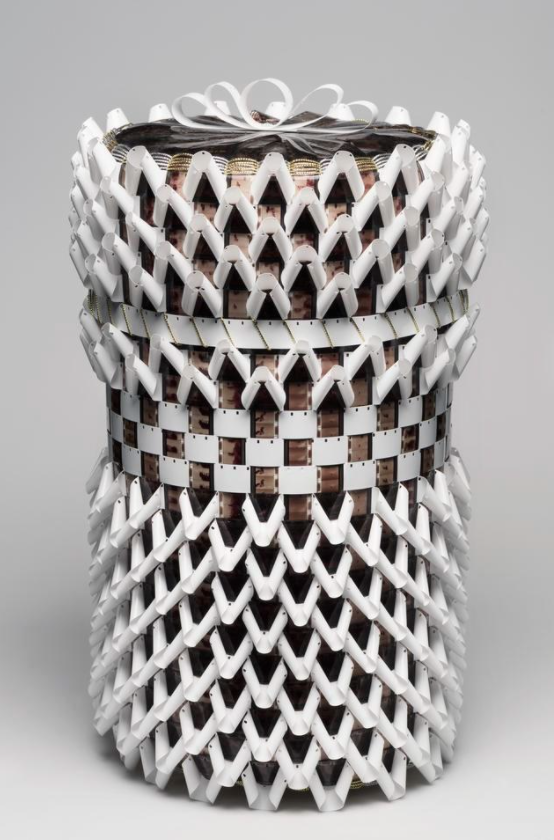Edel Rodriguez, American, born 1971
Strangers, 2018
Artist Edel Rodriguez was born in Havana in 1971. He is formally a writer/illustrator, who tackles issues of systemic oppression by governments and current day issues affecting those disenfranchised by society. Rodriguez is discussing the mass migration movement of people from the global south to the north in 2018, the title Strangers hints at how immigrants are considered to be less than human (depicted by ghosts and monsters) or what Eden refers to as “boat people” who are dangerous and not welcomed within the country they seek asylum within. In his own description he points to acceptance of immigration to the U.S despite potential dangers, he gives the example of Irish gangs or Italian mafias, but now the U.S seems to be scared to grant asylum because they are frightened of potential threats. Label by Isabel Schreur
Once a refugee fleeing from Cuba, Edel Rodriguez painted what others call “Boat People.” This boat full of strangers is filled with faces, some ominous, others ghostly. Their expressions reveal little about their motives, aspirations, or feelings. The only indication of their collective intentions is a white flag of surrender and peace on the tail of the boat. The monochromatic blues inform only a sense of expansion from sky to ocean and beyond. Even so, the boat sails toward darker skies, a warning of storms ahead. In reference to this piece, Rodriguez explained that the United States used to be a country that assumed the danger of immigration without hesitation. He then asserted, “This country now seems scared to take risks on foreigners, to bet on the possibility that the next boat full of strangers might be full of greatness.” Label by Katie Lee




